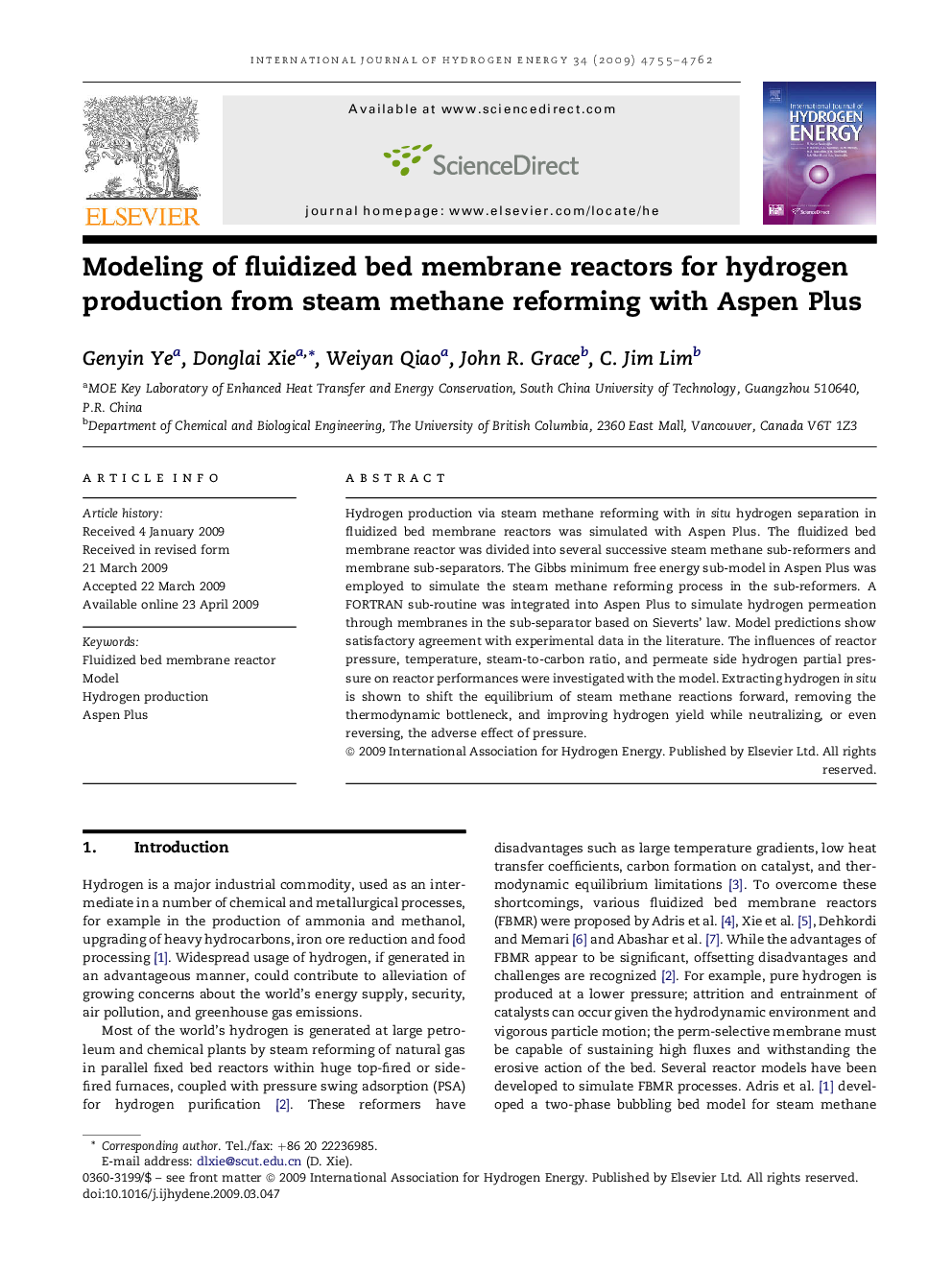| Article ID | Journal | Published Year | Pages | File Type |
|---|---|---|---|---|
| 1277858 | International Journal of Hydrogen Energy | 2009 | 8 Pages |
Hydrogen production via steam methane reforming with in situ hydrogen separation in fluidized bed membrane reactors was simulated with Aspen Plus. The fluidized bed membrane reactor was divided into several successive steam methane sub-reformers and membrane sub-separators. The Gibbs minimum free energy sub-model in Aspen Plus was employed to simulate the steam methane reforming process in the sub-reformers. A FORTRAN sub-routine was integrated into Aspen Plus to simulate hydrogen permeation through membranes in the sub-separator based on Sieverts' law. Model predictions show satisfactory agreement with experimental data in the literature. The influences of reactor pressure, temperature, steam-to-carbon ratio, and permeate side hydrogen partial pressure on reactor performances were investigated with the model. Extracting hydrogen in situ is shown to shift the equilibrium of steam methane reactions forward, removing the thermodynamic bottleneck, and improving hydrogen yield while neutralizing, or even reversing, the adverse effect of pressure.
